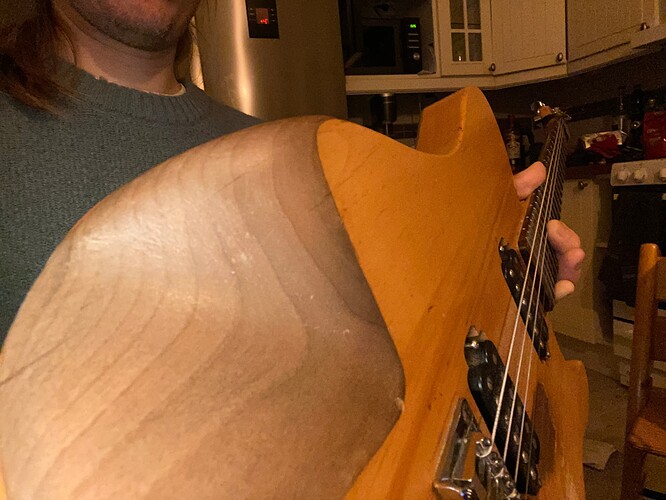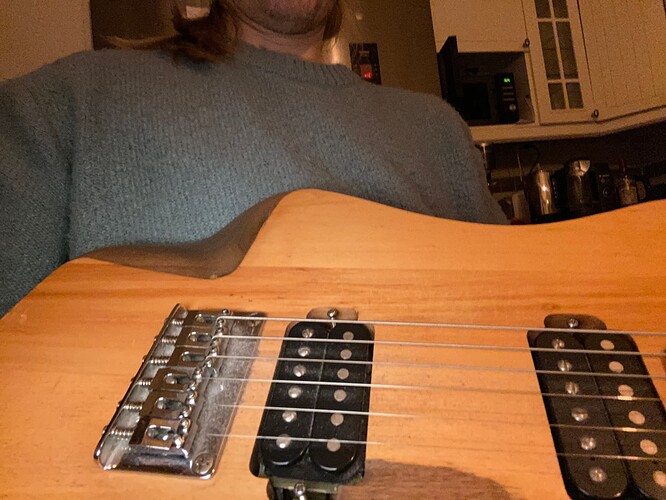Just so we’re clear, I’m definitely not suggesting that you’re doing anything wrong. I think the form you have in these clips is excellent.
I’m just rewatching that section of Rock Discipline now. Honestly, I don’t think the accents are particularly powerful even in the slower examples.
I don’t mind the accents becoming less pronounced as frequency increases (this is inevitable to some degree), but I don’t feel they should disappear entirely.
By haptic connection, I mean your ability to perceive when you are performing the movement correctly based upon tactile and kinaesthetic feedback. Your background tension is very low (much lower than John Petrucci’s background, for example), which is obvious by the free oscillation of your 3rd and 4th finger of your picking hand during the rotational movement.
As a consequence of your low background tension, your sensitivity to tactile and kinaesthetic feedback is high. Essentially, you have very low “noise” affecting your haptic perception. However, it’s not enough just to increase sensitivity by bringing this “noise” down, we also need to bring the signal up.
A powerful accent doesn’t just test your ability to generate power and your dynamic range. It also creates a huge “spike” in your haptic perception of the movement. This helps to establish your rhythmic connection to the movement. It establishes a landmark or a “flag” which aids in building chunks, and which acts as a reference point to synchronise the movement to your internal clock and to your fretting hand. It also provides a clear point where form “refreshes.” Without the accent, form can tend to “drift” over many repetitions, you simply can’t perceive that you’re not doing what you intend to do.
The fact that you have some difficulty performing this movement in perfect time suggests to me that the temporal positioning of your “flag” isn’t clear enough for you to find it consistently at your highest speeds. Once the connection between your movement and your internal clock is well established, playing to a click is really just a matter of synchronising your internal clock to the external click. It really is that simple.
It’s also been demonstrated scientifically that your ability to keep time is contingent upon movement, and that movement which is not linked to your internal clock actually impedes your ability to keep time.
My father is a drummer who is absolutely rock-steady, and he has always told me “If you want to groove, you have to move. You can’t groove if you don’t move.” Ask yourself why every bassist bobs their head while they play. Ask yourself why guitarists are notorious among musicians for having bad time. You need to make your picking hand a fundamental pendulum, driven by your internal clock and continually reinforcing your internal clock.
Why do guitar players store a pick between the strings and the first fret? They can’t find a pocket.
You are able to synchronise this picking movement to your fretting hand. It is possible that your picking hand is “following” your fretting hand and that difficulty in keeping time is due to some fretting hand limitation. Fretting movements are much less regular than picking movements and they don’t reinforce your internal clock as strongly.
You’ve mentioned in another thread that you’ve been performing this movement for nearly a decade and you still occassionally lose it. That seems very discordant to me. There is something, somewhere which is interrupting your haptic or rhythmic connection to the movement.
Obviously, I can’t feel what you feel when performing this movement, so that has to take precedent over anything I say. However, if this is a matter of shaking your forearm as fast as possible, why can’t it go faster? The movement isn’t breaking down in terms of power or range of motion (which is why I think it can go faster), so the limitation here is neurological speed, that is, how fast you send the message to fire off the opposing muscles. Maybe this really is the limit, or maybe just just haven’t learned how to send those signals faster.
Again, this might be possible, but this could also be a fretting hand limitations in Yngwie’s vocabulary. I’m also not crazy about the idea that because Yngwie never did it, that means you can’t.
I think some training of this movement with drum like rudiments on muted string could potentially take it further, and maybe coupled with some patterns which are optimally fast for the fretting hand could get a little more juice out of it too.
All that said, it’s already excellent.














